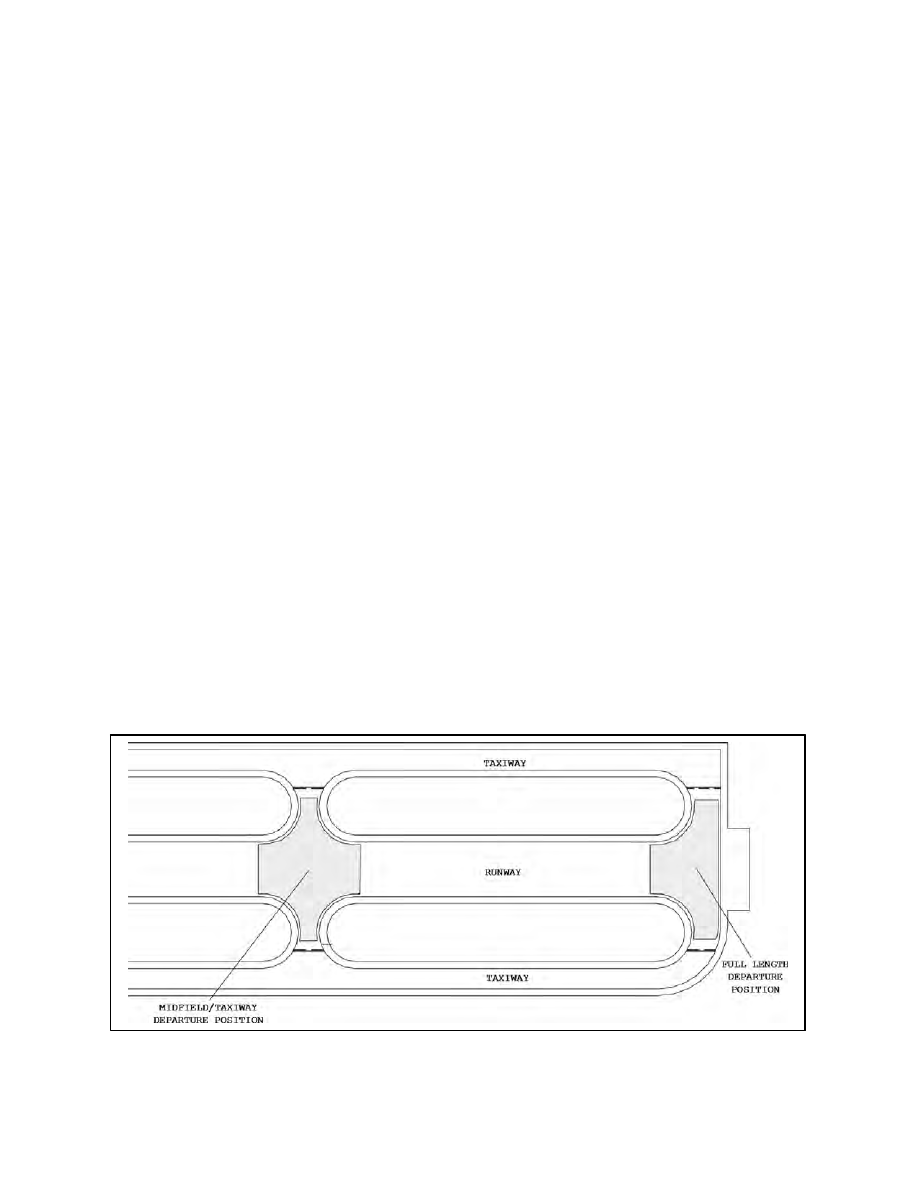
AIM
4/3/14
2−1−10
Airport Lighting Aids
pilot’s taxi or takeoff clearance previously issued by
ATC. If RWSL indicates that it is unsafe to takeoff
from, land on, cross, or enter a runway, immediately
notify ATC of the conflict and re-confirm the
clearance.
4.
Do not proceed when lights have extin-
guished without an ATC clearance. RWSL verifies an
ATC clearance; it does not substitute for an ATC
clearance.
5.
Never land if PAPI continues to flash.
Execute a go around and notify ATC.
g.
ATC Control of RWSL System:
1.
Controllers can set in−pavement lights to one
of five (5) brightness levels to assure maximum
conspicuity under all visibility and lighting condi-
tions. REL, THL, and RIL subsystems may be
independently set.
2.
System lights can be disabled should RWSL
operations impact the efficient movement of air
traffic or contribute, in the opinion of the assigned
ATC Manager, to unsafe operations. REL, THL, RIL,
and FAROS light fixtures may be disabled separately.
Disabling of the FAROS subsystem does not
extinguish PAPI lights or impact its glide path
function. Whenever the system or a component is
disabled, a NOTAM must be issued, and the
Automatic Terminal Information System (ATIS)
must be updated.
2
−
1
−
7. Stand-Alone Final Approach
Runway Occupancy Signal (FAROS)
a.
Introduction:
The stand-alone FAROS system is a fully automated
system that provides runway occupancy status to
pilots on final approach to indicate whether it may be
unsafe to land. When an aircraft or vehicle is detected
on the runway, the Precision Approach Path Indicator
(PAPI) light fixtures flash as a signal to indicate that
the runway is occupied and that it may be unsafe to
land. The stand-alone FAROS system is activated by
localized or comprehensive sensors detecting aircraft
or ground vehicles occupying activation zones.
The stand-alone FAROS system monitors specific
areas of the runway, called activation zones, to
determine the presence of aircraft or ground vehicles
in the zone (see FIG 2−1−10). These activation zones
are defined as areas on the runway that are frequently
occupied by ground traffic during normal airport
operations and could present a hazard to landing
aircraft. Activation zones may include the full-length
departure position, the midfield departure position, a
frequently crossed intersection, or the entire runway.
Pilots can refer to the airport specific FAROS pilot
information sheet for activation zone configuration.
FIG 2
−1−10
FAROS Activation Zones
Clearance to land on a runway must be issued by Air
Traffic Control (ATC). ATC personnel have limited
control over the system and may not be able to view
the FAROS signal.